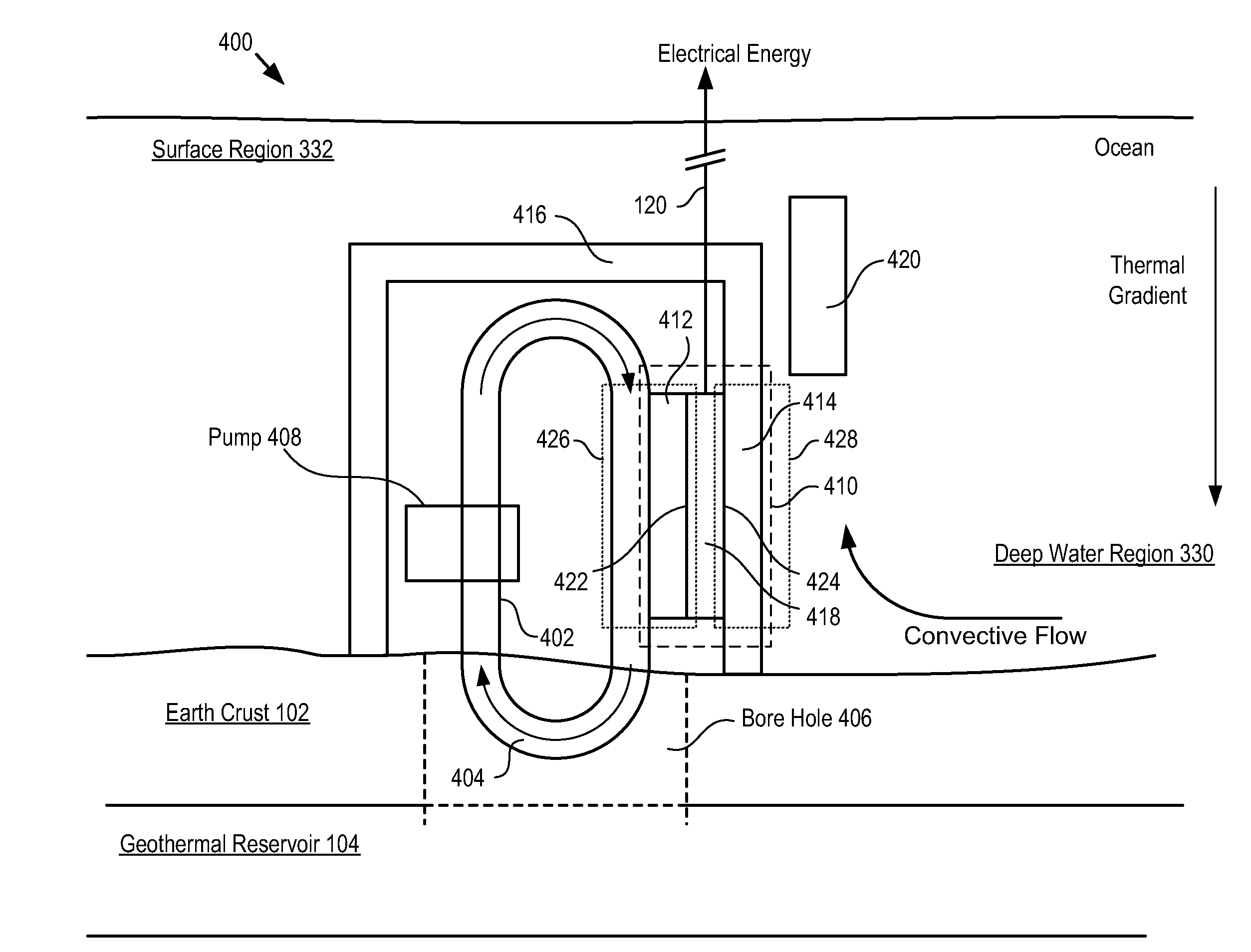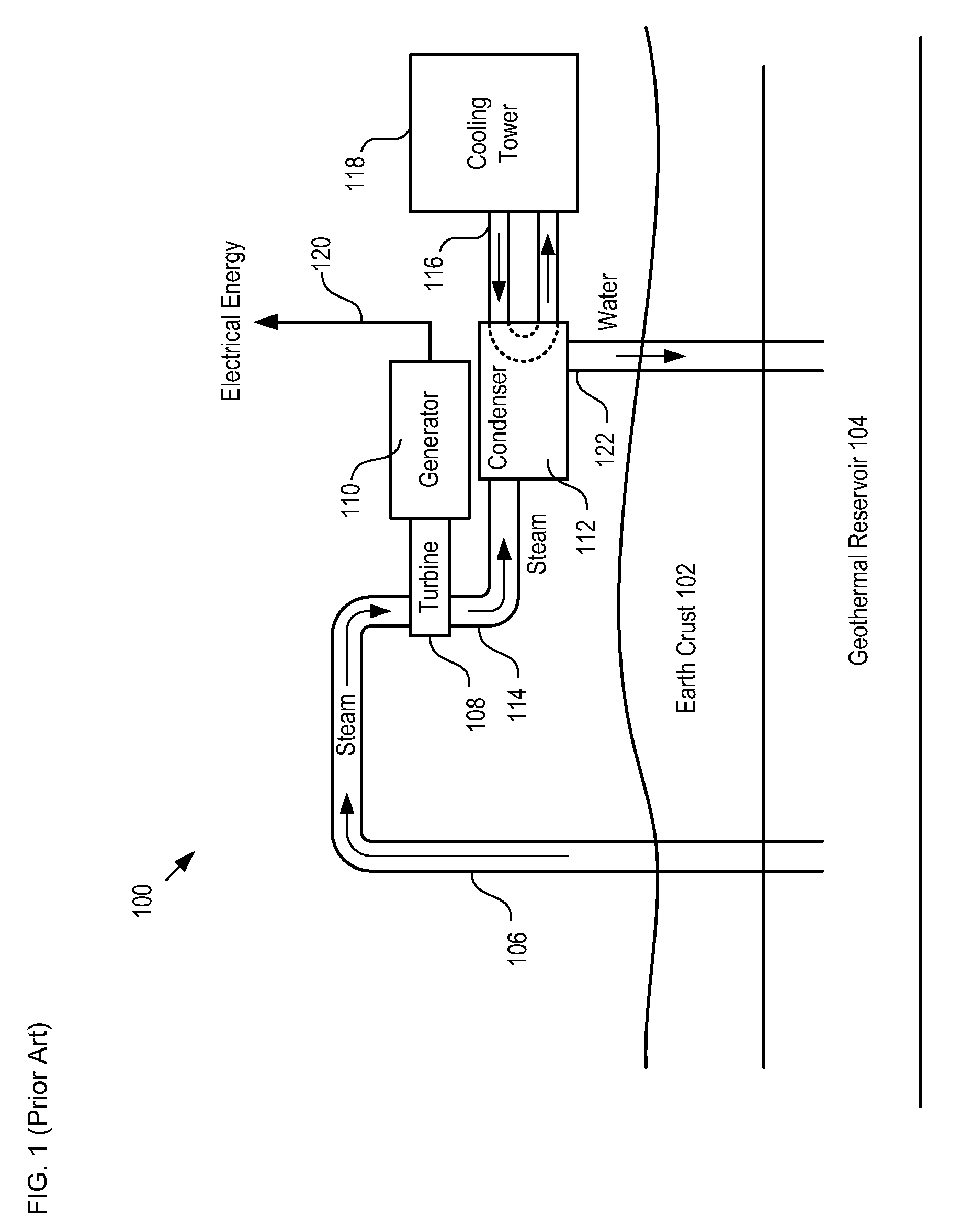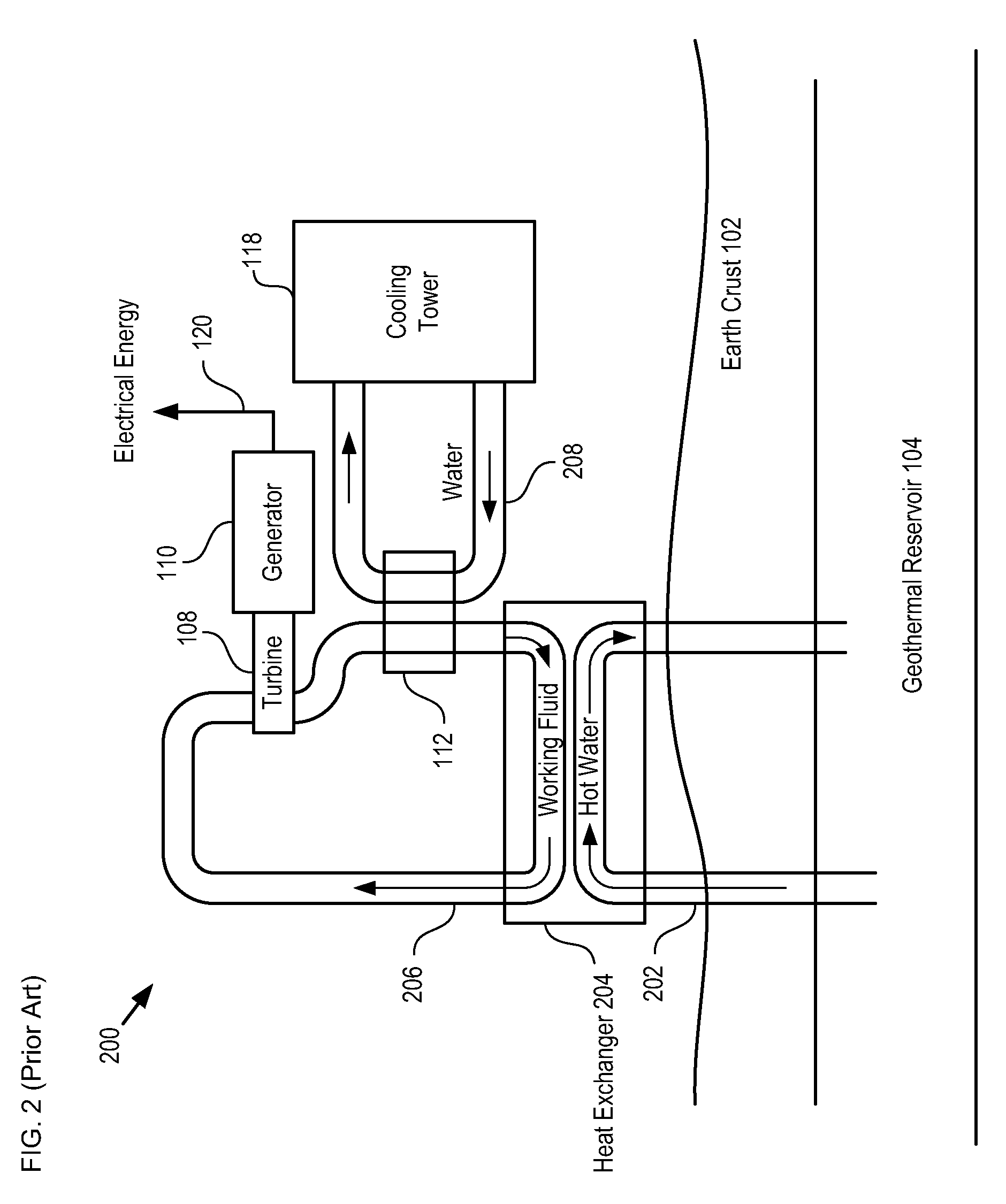Submerged Geo-Ocean Thermal Energy System
- Summary
- Abstract
- Description
- Claims
- Application Information
AI Technical Summary
Benefits of technology
Problems solved by technology
Method used
Image
Examples
Embodiment Construction
[0024]FIG. 1 depicts a schematic diagram of details of a prior-art dry steam geothermal energy conversion system. Energy system 100 comprises inlet conduit 106, turbine 108, generator 110, condenser 112, conduits 114 and 116, cooling tower 118, and outflow conduit 122. Turbine 108 and generator 110 collectively define a turbogenerator. In cases, a water pump is coupled to the outflow of condenser 112 to drive the return water to greater depths or to facilitate flow in a very long or narrow outflow conduit 122.
[0025]Inlet conduit 106 is inserted through earth crust 102 into geothermal reservoir 104. Inlet conduit 106 conveys steam from geothermal reservoir 104 to turbine 108. Turbine 108 is operatively coupled to generator 110.
[0026]The steam from geothermal reservoir 104 drive turbine 108, which turns generator 110 to produce electrical energy. The generated electrical energy is conveyed to an end user or storage facility on output cable 120.
[0027]Conduit 114 receives the steam that...
PUM
 Login to View More
Login to View More Abstract
Description
Claims
Application Information
 Login to View More
Login to View More - R&D
- Intellectual Property
- Life Sciences
- Materials
- Tech Scout
- Unparalleled Data Quality
- Higher Quality Content
- 60% Fewer Hallucinations
Browse by: Latest US Patents, China's latest patents, Technical Efficacy Thesaurus, Application Domain, Technology Topic, Popular Technical Reports.
© 2025 PatSnap. All rights reserved.Legal|Privacy policy|Modern Slavery Act Transparency Statement|Sitemap|About US| Contact US: help@patsnap.com



